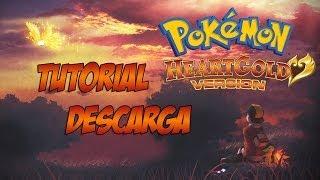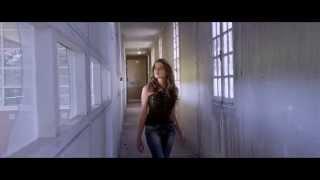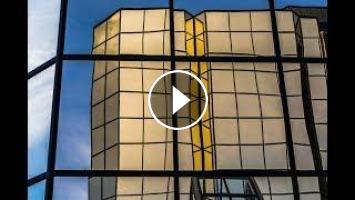In his latest creative video, Ray Scott takes us into the world of window reflections and shows us how incredibly interesting window scenes can be. The possibilities are endless as glass not only shows what it reflects but can also add fantastic abstract elements to the viewer just because of how wavy in might be. Distortions are welcome as well as different angles. Ray encourages you to use different apertures and focal lengths as vastly different results can occur. It is also shown that just by moving about, big changes can occur in the reflection.
When in studio or in the field Ray uses Canon gear. This is a choice he made years ago knowing that he was buying into a system that he could grow into. His go to camera is the Canon EOS 6D with the second camera being a Canon 5D. Lenses used are all L series f/4 except for the 100mm macro f/2.8L lens. They are the 16-35mm f/4L wide angle, 24-105mm f/4 walk around and the 70-200mm f/4L medium telephoto. These lenses round out the kit which is carried about with either a Lowepro Urban Reporter 250 messenger bag for city shooting or a Lowepro Sling Bag for landscape field work. While Ray does more camera handholding than before due to the image stabilization capabilities of his various lenses, he still is a believer in using his Manfrotto carbon fibre tripod. It's light and it is sturdy. In studio Ray now uses Westcott constant lighting for good clean balanced lighting.
Ray is a firm believer in exposing himself to as much photography and its history as possible. By looking at other people's photos, he has gained a big appreciation of what this medium has to offer. Ray doesn't think that "copying" someone else's style is a good thing but rather feels that exposing oneself to others work can work as a teaching and inspirational tool. With this in mind, Ray has amassed a list of favorite photographers that he uses for inspiration. Some of these artistic photographers are Galen Rowell, Ansel Adams, Frans Lanting, Annie Leibovitz, Henri Cartier-Bresson, Robert Capa, Freeman Patterson, William Neill and Richard Avedon.
One of the playlists on this channel is called "neighbourhood photographer" which covers tutorials shot in urban and suburban areas. It's always a challenge to see different things of interest when you've been to an area many times yet this is the best way to create good images. You need to return to familiar locations many times. To do so, Ray often drives by car to an area but when he really wants to cover ground yet see things more clearly, he uses his bicycle…bike…and explores the given place.
Whether shooting landscape, macro, portrait or abstract images, Ray always tries to be aware of his surroundings to capture the best pictures possible. Part of this workflow means he is very aware of composition and uses various tips, such as the rule of thirds, as a good starting point in composing. He also likes to break rules from time to time to add new effects to his photos. Being aware of angles, shadows, shapes, lines, textures, patterns and colours goes a long way to making good pictures. He is also a big believer in "getting out there" and shooting as much as possible as it is the only way to improve and flex one's imagination. His message is it doesn't matter if you do your photography in the city, suburbs country, mountains or by the sea, just make sure you do it and follow your artistic passion.
Find me also on…
Facebook...https://www.facebook.com/visart66?ref=hl
Website...https://www.visart.ca
When in studio or in the field Ray uses Canon gear. This is a choice he made years ago knowing that he was buying into a system that he could grow into. His go to camera is the Canon EOS 6D with the second camera being a Canon 5D. Lenses used are all L series f/4 except for the 100mm macro f/2.8L lens. They are the 16-35mm f/4L wide angle, 24-105mm f/4 walk around and the 70-200mm f/4L medium telephoto. These lenses round out the kit which is carried about with either a Lowepro Urban Reporter 250 messenger bag for city shooting or a Lowepro Sling Bag for landscape field work. While Ray does more camera handholding than before due to the image stabilization capabilities of his various lenses, he still is a believer in using his Manfrotto carbon fibre tripod. It's light and it is sturdy. In studio Ray now uses Westcott constant lighting for good clean balanced lighting.
Ray is a firm believer in exposing himself to as much photography and its history as possible. By looking at other people's photos, he has gained a big appreciation of what this medium has to offer. Ray doesn't think that "copying" someone else's style is a good thing but rather feels that exposing oneself to others work can work as a teaching and inspirational tool. With this in mind, Ray has amassed a list of favorite photographers that he uses for inspiration. Some of these artistic photographers are Galen Rowell, Ansel Adams, Frans Lanting, Annie Leibovitz, Henri Cartier-Bresson, Robert Capa, Freeman Patterson, William Neill and Richard Avedon.
One of the playlists on this channel is called "neighbourhood photographer" which covers tutorials shot in urban and suburban areas. It's always a challenge to see different things of interest when you've been to an area many times yet this is the best way to create good images. You need to return to familiar locations many times. To do so, Ray often drives by car to an area but when he really wants to cover ground yet see things more clearly, he uses his bicycle…bike…and explores the given place.
Whether shooting landscape, macro, portrait or abstract images, Ray always tries to be aware of his surroundings to capture the best pictures possible. Part of this workflow means he is very aware of composition and uses various tips, such as the rule of thirds, as a good starting point in composing. He also likes to break rules from time to time to add new effects to his photos. Being aware of angles, shadows, shapes, lines, textures, patterns and colours goes a long way to making good pictures. He is also a big believer in "getting out there" and shooting as much as possible as it is the only way to improve and flex one's imagination. His message is it doesn't matter if you do your photography in the city, suburbs country, mountains or by the sea, just make sure you do it and follow your artistic passion.
Find me also on…
Facebook...https://www.facebook.com/visart66?ref=hl
Website...https://www.visart.ca














Comments